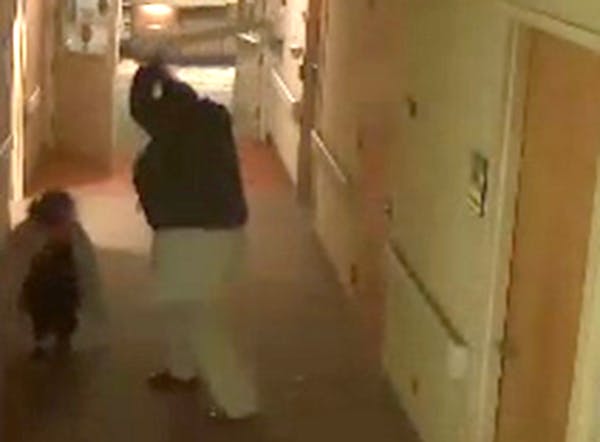A startup firm in Crystal, Minn., believes it has an answer to rising violence in Minnesota's hospitals — a new kind of irritating spray that subdues attackers while minimizing harm to bystanders and victims.
Founder Jody Allen Crowe launched Crotega in 2014 after he said his research for a book on school shootings highlighted the need for more protective tools in the minutes before police officers respond. The former school superintendent then focused on solutions after a 2021 shooting in a Buffalo, Minn., clinic left one person dead and four injured.
"Thirty seconds to a minute of violent behavior can result in severe injuries if people don't have any way to stop it," Crowe said.
Minnesota hospitals have discovered this the hard way with an increase in attacks by delirious patients, distraught relatives and angry visitors. About 630 hospital employees missed work to recover from violence-related injuries from 2021 through 2022, triple the total from a decade earlier, according to the Bureau of Labor Statistics.
Crowe worked with a chemist to create a chemical irritant called REPULS. It uses propionic acid, the same food-grade chemical that creates flavors and holes in swiss cheese. Pepper sprays are based on capsaicin, the chemical derived from hot peppers. Both cost about $16 for a standard, palm-sized bottle.
While effective, pepper sprays can spread in plumes that overwhelm attackers but also cause bystanders to gasp for breath and wipe their burning eyes — especially in the confines of a hospital room or hallway, Crowe said. It can seep into ventilation ducts, potentially exposing others in a hospital who have respiratory conditions such as asthma.
Security officers carried pepper spray for years at HCMC in Minneapolis but didn't use it in emergencies, said Michael Ramos, a security supervisor for the urban trauma center.
"None of our officers did, because it contaminates everyone," he said. "It shuts down part of the hospital [for cleanup afterward] because it's such a potential irritant. And if we have to wrestle with the guy, we get contaminated too."
HCMC was among the first hospitals in 2021 to try Crotega's alternative, which is designed to severely irritate the eyes but dissipate with water in less than five minutes. Guards were so hesitant that Ramos had them sprayed to understand the duration of the irritant.
"We want them to know what it feels like," said Ramos. He's been sprayed himself, about 10 times, in training.
Hospital systems in eight states have purchased REPULS, including Allina Health, HealthPartners and M Health Fairview in the Twin Cities. Iowa-based UnityPoint Health has distributed the chemical irritant across seven of its hospitals.
Security officers aren't using the spray at the first sign of trouble, Ramos said. Verbal de-escalation remains the priority to prevent violence, but he said HCMC's policy allows officers to spray an attacker proactively and not just in reaction.
"You don't have to get punched first to use it," he said.
Hospitals and clinics have responded to rising violence over the past two years by restricting entrances and increasing de-escalation training — which Minnesota now requires before hospital workers can provide patient care without supervision.
Risk assessments are documented and updated in medical records to determine which patients present threats or acted violently in prior visits. Patients emerging from sedation or recovering from drug overdoses tend to present elevated risks.
Crowe said he recommends that doctors and nurses be trained to use the chemical irritant, and possibly carry it with them when encountering a patient presenting an elevated threat. For now, most hospitals limit it to security personnel.
"Rather than waiting for security to show up, after injuries have already occurred, this can be used immediately," he said.
Crowe's next goal is the development of SentriZone, which would work like a fire sprinkler system and deliver the chemical irritant at entrances and other locations in hospitals where outbursts are likely. The system could be triggered remotely by security personnel when they observe attackers on video monitors.
HCMC has documented about 60 incidents over two years in which REPULS was used to subdue violence. The only time it didn't work, Ramos said, was when an attacker turned his head and dodged the spray.
But even that momentary distraction, he said, "gave us enough time to move in and take control."
Carolyn Parnell, 'trailblazer' who served as Minnesota's first IT commissioner, dies


